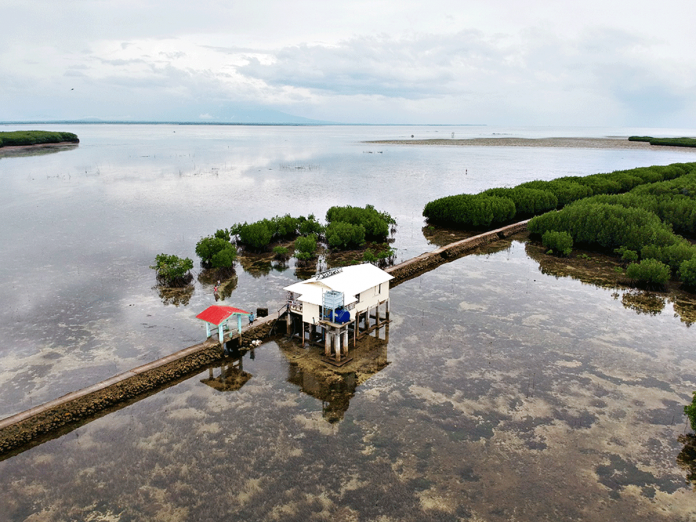
JUST OFF Molocaboc Island, beneath a turquoise canopy of water, fishers search the coral reef to pick out abalone and sea cucumber, two prized delicacies in Asian cuisine. Live abalone sells abroad for up to $120 or approximately P5, 700 a kilo, and dried sea cucumber, $2000 or about P96, 000 a kilo.
But the fishers are not here to cash in on the abalone grazing on coralline substrates and the sea cucumber burrowing in the white sand. Not yet. They carefully weigh and size them, log the numbers in a notebook, and return them to the reef to continue to grow and reproduce.
During the formative years of the sea ranching project, the fisher folks asked when they will benefit from the rehabilitation of the overfished abalone, sea cucumber, and seahorse population. Answering their questions was Dr. Nerissa Salayo, a socioeconomist of the Southeast Asian Fisheries Development Center Aquaculture Department (SEAFDEC/AQD). “It will likely take longer than we would expect, it could be beyond our lifetime, but for sure, if we succeed, we will leave a legacy to the fisher folk of the future generations,” she said.
Some fisherfolk got serious, but with a smile, they said, “So we’re dead already, but our children will benefit.” Over a decade since the conversation with Salayo, they have abandoned destructive fishing practices and adopted a sea-ranching approach.
Salayo looks back at the people’s cooperation and participation and credits them for the present success of the sea ranching project at Molocaboc Island, 20 minutes by boat from the Sagay City Port north of Negros Island.
It was since 2006 when the Molocaboc fishers and the Sagay City local government have been working with SEAFDEC/AQD whose staff guided them in the Community-Based Resource Enhancement Project. After years of social preparation and assessments, hatchery-bred juveniles of abalone, sea cucumber, and seahorses were periodically released in a no-catch zone, starting in 2011. Since then, the fishers have been protecting and monitoring the stocks.
Abalone, sea cucumber, and seahorses flourished and, except for seahorses which are banned from the trade, gleaners started gathering just outside the protected site. Over the years, they reported catching a bit more which supplemented their subsistence income. In 2017, the fishers of Molocaboc began shipping live abalone to top hotels in Manila, while local traders supplied exporters in Cebu.
To ensure sustainability, gleaners only harvest abalone with shells at least 6 centimeters long, thanks to a Sagay City regulation initiated by the project. Sea cucumbers are also protected by nationwide harvest-size and trade regulations.(SEAFDEC/PN)



